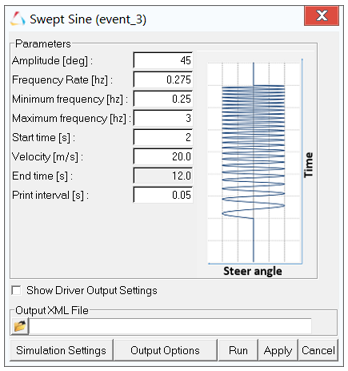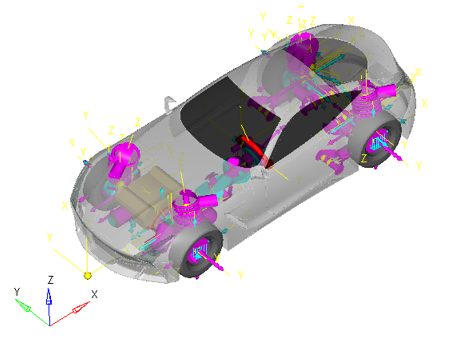Swept Sine
A Swept Sine event simulates a vehicle driving at a constant speed with a sinusoidal steering input of constant magnitude but increasing frequency applied.
Output Requests are included to measure the vehicle state variables, tire forces, and tire state variables. The Altair Driver steers the vehicle and maintains constant speed. A plot template is available to plot the results.

Figure 1.
| Parameter | Description |
|---|---|
| Amplitude | Amplitude of the steering input (degrees). |
| Frequency Rate | The rate of change of frequency (hz/sec) of the sine wave function applied to the steering wheel. |
| Minimum frequency | The minimum (initial) frequency sine wave that is applied to the steering wheel. |
| Maximum frequency | The maximum (final) frequency sine wave that can be applied to the steering wheel. |
| Start time | The start time of the sine wave steering function application to the steering wheel. |
| Velocity | The constant speed that the vehicle attempts to maintain during the event. |
| End Time | End time of the simulation. End time is calculated using the start time, the frequency rate, and the max and min frequencies. All frequencies from min to max are run. |
| Print interval | Data is output to the plot files and graphics file at this time interval (seconds). |

Figure 2. Swept Sine Event
Reference
ISO +7401-2003 - Road vehicles — Lateral transient response test methods — Open-loop test methods.